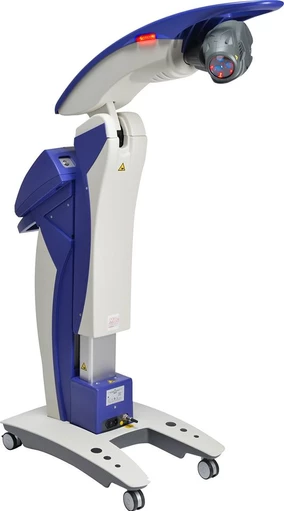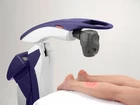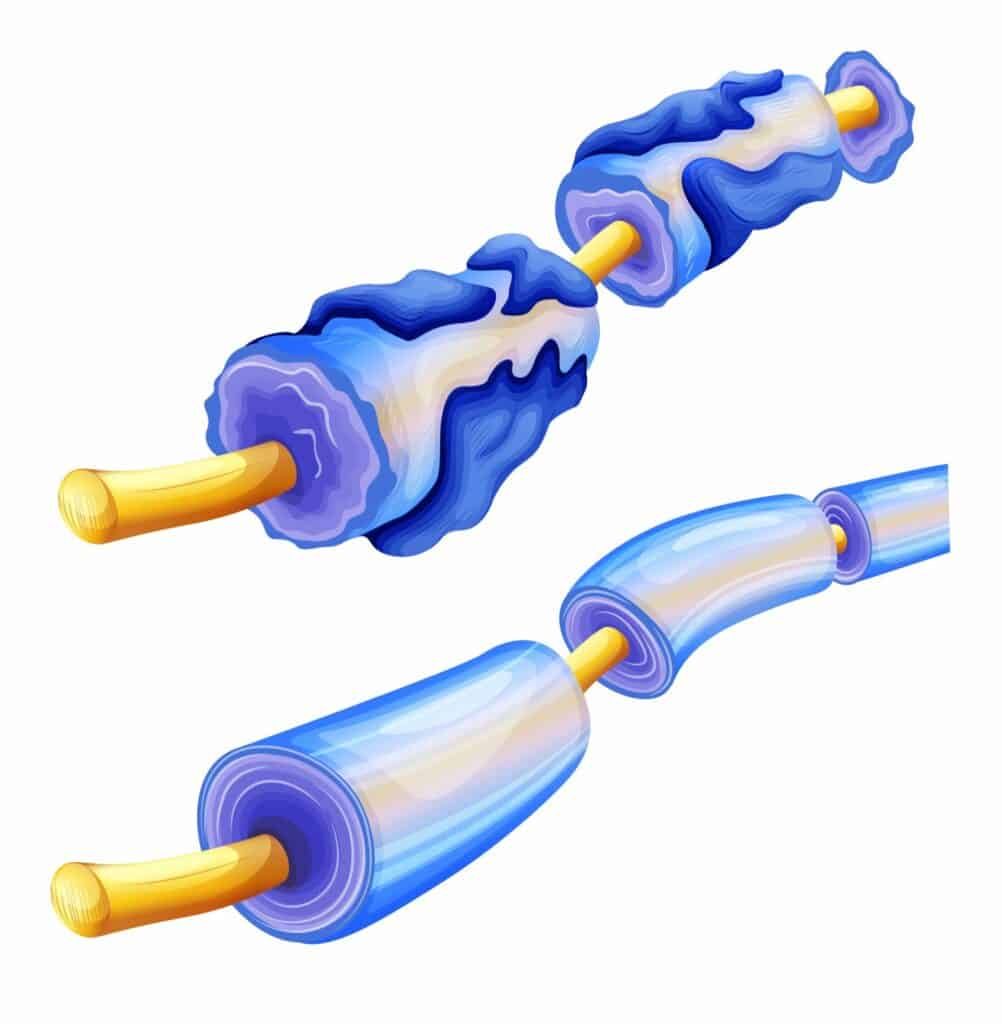MLS 5 Cold Laser Therapy

Laser Therapy
Podiatrist and other doctors report that MLS 5 Cold Laser Therapy can effectively treat pain and inflammation associated with the following conditions:

- Plantar Fasciitis
- Neuromas
- Neuropathies
- Arthritis
- Sports injuries
- Tendon & ligament injuries
- Back & joint pain
- Muscle sprains & strains
- Tendonitis
- Wounds
- Post-surgical swelling
- Disc disease

Clinical Benefits of MLS 5 Cold Laser Therapy
MLS Laser Therapy is quickly becoming the standard of care in alleviating both acute and chronic pain. This patented, FDA-cleared technology has an 85% – 90% efficacy rate in relieving pain and inflammation, eliminates risk from surgery and prescription pain killers, has no negative side effects, and restores patients’ lives.
Pain Relief
MLS Laser Therapy has a beneficial effect on nerve cells. It blocks pain transmitted by these cells to the brain which decreases nerve sensitivity. Also, due to the decreased inflammation, there is less edema and less pain. Another pain blocking mechanism involves the production of high levels of pain killing chemicals such as endorphins and enkephalin from the brain and adrenal glands.
Wound Healing
Laser light stimulates fibroblast development in damaged tissue. Fibroblasts are the building blocks of collagen, which is the essential protein required to replace old tissue or to repair tissue injuries. As a result, MLS Laser Therapy is effective post surgically and in the treatment of open wounds and burns.
Tissue Repair Improved
Photons of light from lasers penetrate deeply into tissue and accelerate cellular reproduction and growth. The laser light increases the energy available to the cell so that the cell can take on nutrients faster and get rid of waste products. As a result of exposure to laser light, damaged cells are repaired faster.
Nerve Function Improvement
Slow recovery of nerve functions in damaged tissue can result in numbness and impaired limbs. Laser light speeds the process of nerve cell reconnection and increases the amplitude of action potentials to optimize muscle healing.
Anti- Inflammatory
MLS Laser Therapy has an anti-edema effect as it causes vasodilation, but also because it activates the lymphatic drainage system which drains swollen areas. As a result, there is a reduction in swelling caused by bruising or inflammation.
Improved Vascular Activity
Laser light will significantly increase the formation of new capillaries in damaged tissue which speeds up the healing process, closes wounds quickly and reduces scar tissue. Additional benefits include acceleration of angiogenesis, which causes temporary vasodilation and increases the diameter of blood vessels.
Increased Matabolism
MLS Laser Therapy creates higher outputs of specific enzymes, greater oxygen and food particle loads for blood cells.
Less Scar Tissue
MLS Laser Therapy reduces the formation of scar tissue following tissue damage from cuts, scratches, burns or surgery.
Immunoregulation
Laser light has a direct effect on immunity status by stimulating immunoglobulins and lymphocytes. Laser emissions are absorbed by chromophores (molecule enzymes) that react to laser light. Upon exposure to the laser, the enzyme flavomononucleotide is activated and starts the production of ATP (adenosinetriphosphate), which is the major carrier of cell energy and the energy source for all chemical reactions in the cells.
Primary Biological Effects of MLS 5 Cold Laser Therapy
- Photochemical Effect
- Photothermal Effect
- Photomechanical Effect
Direct transfer of energy to the biological sublayers (endogenous or exogenic chromophores).
- Enzymatic activation
- Increase in ATP production
- Modulation of cellular metabolism
- Effect on pain perception threshold
Secondary Biological Effects of MLS 5 Cold Laser Therapy
- Effects on Cells
- Effects on Tissue
- Systemic Effects
- Increase in ATP synthesis
- Increase in the production of RNA
- Increase in cellular proliferation
- Induction of differentiation processes
- Release of growth factors (fibroblasts) and other substances
- Increase in the production of molecules of the extracellular matrix (fibroblasts & condrocytes)
Pregnant women and patients with cancer are advised to postpone treatment. Infants under 2 years of age should also wait to receive treatment. Yet safety is one of this technology’s strongest assets. Put simply, MLS is safe for nearly all individuals, and can benefit a wide variety of difficult to treat conditions.
How much does Multi-wave Locked System therapy cost? Will it be covered by insurance?
Prices for MLS therapy vary widely based on a variety of factors. They are likely to be more expensive in urban areas and less expensive in rural ones. As this is not a “one and done” treatment, most clinics only offer entire treatment plans. Treatment is then typically delivered 3 times per week until its conclusion. On average, an individual treatment costs about $60, and 12 treatments are prescribed. Following this example, this means a one-time average cost of $720.
At this time, most insurance companies refuse to cover the cost of MLS. This will hopefully change as research which supports MLS accumulates.
K-Laser Therapy? What is it, and how can it help?
Addressing any injury depends on finding the right treatment strategy. This is especially true of chronic injuries. This type of injury, by nature, is long-standing. Incomplete or poor-quality healing often complicates the issue. An inadequate blood supply (poor circulation) is also a common complicating factor.
Now consider what “cold” laser devices such as the K-Laser System have to offer. Treatments improvie circulation, reduce inflammation, and facilitate the healing process. In short, they address precisely what makes chronic injuries so resistant to treatment.
Cold-laser basics:
K-Laser and devices like it are informally known as “cold” lasers. This simply means that low levels of heat are generated during treatment. In opposition, the “hot” lasers used by dermatologists and surgeons can generate enough energy to actually destroy tissue. Instead, cold devices operate on a cellular level by triggering several key components of the healing process. It’s a more subtle effect, yet one that can lead to dramatic long-term results.
Laser Classifications
Low Level Laser Therapy (LLLT) Class 3B
These lasers use very low power, are limited to surface biostimulation, and often require many treatment sessions and long treatment times. Results are only achieved at the end of the treatment cycle, and results are limited because of the use of only one or two wavelengths that are not synchronized.
High Power (HP) Class IV
These lasers were developed with the expectation that greater power corresponded to better efficiency. On the contrary, unless suitably controlled, high power can thermally damage the treated tissue. Therefore, the majority of high power lasers cannot operate at their maximum power without causing damage.
Multiwave Locked System (MLS) Class IV

MLS Laser Therapy is a patented emission system created to achieve an efficient and simultaneous effect on pain, contracture, inflammation, and edema within a short period of time. The patented control system that generates the MLS pulse synchronizes the emissions to achieve optimum results. Due to this characteristic synchronization, the various therapeutic effects not only take place at the same time, but reciprocally reinforce each other, without the risk of thermal damage.
How is Multi-wave Locked System (MLS) therapy different from other “cold laser” treatments?
True to their name, “cold lasers” do not contain enough energy to heat body tissue. The terms “low-level laser therapy (LLLT) is also used. So what is actually happening in the body when a cold laser is applied? Quite a lot, according to several newer, high-quality research studies.
The “secret” behind MLS therapy is actually quite simple. It’s like getting treated by several different laser devices at once. This leads to what is known as a synergistic benefit. When used together, each wavelength of laser light is able to accomplish more than it could alone. MLS treatments are more beneficial because more is happening during each treatment. This is something that was technically impossible with older generation lasers.
What does this mean for you? Ultimately MLS is able to provide better results over a wider variety of conditions. What’s more, research is beginning to support the effectiveness of cold laser therapy. This means that technological progress is likely to continue, i.e. we’ll keep building better lasers. Our understanding of how and when to use these devices will also improve. This means more standardized, evidence-based protocols.
Indeed, the future looks “bright” for such devices. It is predicted that low-level laser therapy will become more mainstream. In fact, MLS is one of the only FDA-Approved (as opposed to FDA Cleared) systems on the market. Today, current generation lasers like the Multi-wave Locked System are leading this movement forward.
Acute injuries are likely to respond more quickly. Longer standing, chronic conditions often respond more slowly. This intuitively makes sense. A more complex condition, years in the making, will naturally take longer to improve. If the treatment plan is stopped prematurely then the condition will most likely return.
In the most extreme cases several phases of treatment may be needed for maximum improvement. Another way of looking at this is that multiple phases of healing are necessary. In all instances the healing cascade triggered by MLS continues in the weeks and months following treatment. Again this makes sense. While MLS can “force” the body to heal, the physical process of healing still takes time.
Is MLS different from other Class-IV “cold” laser devices?
Yes. The Multi-wave Locked System delivers multiple laser wavelengths simultaneously. Older generation lasers operate on a single wavelength only. In terms of treatment benefits, MLS can reduce inflammation while simultaneously relieving pain. Going further, a synergistic effect is achieved. This means that the combined effect of each wavelengths is far greater than that the base wavelengths.
More research is necessary to fully understand exactly how MLS is effective. It is suspected, however, that this synergistic effect is especially beneficial for chronic, treatment-resistant conditions.
Does MLS therapy work well when used with other rehab techniques?
Multi-wave Locked System laser treatments complement almost all traditional rehab methods. This most obviously includes physical therapy (PT) and occupational therapy (OT). Other non-invasive manual treatments such as chiropractic, spinal decompression, and massage are natural pairings. MLS is also a valuable tool to help ensure proper healing after surgery. Note that this includes the surgical incisions themselves.
Is Multi-wave Locked System laser therapy a good choice for everyone?
No single treatment is appropriate for all conditions across all patients.
How long does a typical cold laser therapy session last?
The duration of a typical cold laser therapy session can vary based on the specific condition being treated and the healthcare provider’s recommendations. However, sessions typically last between 5 to 30 minutes. During the session, a handheld device emitting low-level lasers or light-emitting diodes is applied directly to the affected area. The exact duration and number of sessions required for optimal results depend on the nature and severity of the condition being treated, and these specifics are determined by the healthcare professional overseeing the therapy.
How deep into the tissues can cold laser therapy penetrate?
The depth to which cold laser therapy can penetrate tissues depends on the specific wavelength of the laser light being used. In general, the penetration depth of cold lasers typically ranges from a few millimeters to a few centimeters beneath the skin’s surface.
Low-level lasers used in cold laser therapy emit non-thermal photons of light. These photons can penetrate the skin and are absorbed by cells, initiating a series of physiological responses. The depth of penetration varies based on factors such as the specific tissue type, skin color, and the wavelength of the laser light.
Are there any long-term effects or benefits associated with multiple sessions of cold laser therapy?
Cold laser therapy, also known as low-level laser therapy (LLLT), has been studied for various medical conditions, and multiple sessions may offer certain long-term effects and benefits. Here are some potential long-term effects and benefits associated with multiple sessions of cold laser therapy:
- Pain Management: Cold laser therapy is often used to manage chronic pain conditions. Multiple sessions may help in reducing pain and inflammation over the long term, leading to improved quality of life for individuals with conditions like arthritis or chronic joint pain.
- Tissue Repair and Regeneration: Cold laser therapy has been suggested to promote tissue repair and accelerate healing processes.
What happens after MLS 5 Cold Laser Therapy treatments?
A wide variety of acute and chronic conditions can benefit from MLS. With this being said, following treatment guidelines is essential. All MLS protocols consist of multiple treatments, usually between 7-15. Most patients start to recognize positive changes after about 1-3.
It’s important to remember that completing the recommended number of treatments is key to lasting, positive results.
How deep does Cold Laser Therapy Penetrate?
The depth of penetration varies due to tissue type, but it will penetrate 4-5 cm in most cases.
How Many Cold Laser Therapy Treatments do you need for results?
Results can often been seen after the first treatment. Most conditions have protocols that range from 6-10 treatments. The treatments are cumulative and are delivered 2-3 times per week for 2-3 weeks.
Why is Cold Laser Therapy better than traditional LLLT?
MLS Laser Therapy is able to induce strong anti-inflammatory, anti-edema, and analgesic effects simultaneously and within a short period of time. LLLT cannot achieve these results because of the limitations of using one or two wavelengths that are not synchronized. The patented control system that generates the MLS pulse synchronizes the emissions to achieve results previously unattainable. Thanks to this characteristic synchronization, the various therapeutic effects not only take place at the same time but reciprocally reinforce each other.
Types of Nerve Pain that Can be Improved with Cold Laser

Numbness and Tingling Post-Surgery
Numbness may occur for different reasons following surgery. Numbness of the hands and feet can be very irritating, which is why it should be addressed. If you experience numbness that is unexpected and was not mentioned by your surgeon, call your doctor and let them know as it may be a sign of a serious complication following surgery.
Causes of Nerve Pain After Surgery
Anesthesia
Anesthesia is used to prevent the pain of surgery. There are many types of anesthesia but they serve the same purpose of preventing pain. Following surgery, anesthesia can cause temporary numbness especially if a nerve block was performed. Some procedures may cause numbness for hours or up to a day. This numbness will prevent pain and will subside with time.
Positioning
Being positioned on the surgical table for long periods of time can cause numbness, and the chances of this occurring are greater with longer procedures.
Nerve Injury Treatment
An injury that cuts into a nerve can lead to numbness in the area that the nerve innervates. There is always a possibility for a nerve to be cut during a surgery. Surgeons take all the precautions necessary to prevent nerve damage. Swelling after surgery may lead to impingement of the nerves. This is concerning if you are placed in a hard cast or restrictive bandage.
Surgical Nerve Damage
Your surgeon will discuss if permanent nerve damage is a potential complication of your procedure. This is something that you will need to think about when deciding to follow through with surgery.
Incision Numbness
The area around the incision is often numb after surgery and may be numb for several months following surgery. The nerves that run through the surgical site can become damaged, but the sensation often returns in a few months.
Numbness Worse After Surgery
If numbness was present before surgery, it may be worse following the procedure. If surgery is successful, more sensation may be felt as inflammation and swelling from surgery will improve. If you had a pinched nerve in your back and had numbness in your foot, you may experience an increase in numbness in that area. This can improve as recovery time increases.
When to Seek Emergency Care
Numbness is a serious condition that must be treated as an emergency if you:
- Lose control of your urine
- Lose control of your bowels
- Experience sudden changes in your ability to speak
- Experience an inability to walk
- Have facial drooping, especially on one side of the face.
- Experience one-sided weakness in the entire body.
- Experience significant and severe numbness below your surgical site, if you had back or spine surgery
Seek emergency care if you have any of these symptoms.
Numbness Can Improve
Numbness typically improves dramatically as the anesthesia wears off. Most patients experience a full recovery from numbness in a day or two following surgery.
Nerve damage takes longer to resolve. Six months to one year after surgery is typically when recovery is considered complete and nerve damage has improved as much as expected. There are always exceptions, and some patients may have additional procedures to further improve sensation. MLS-5 Laser can help to improve numbness with faster results.
